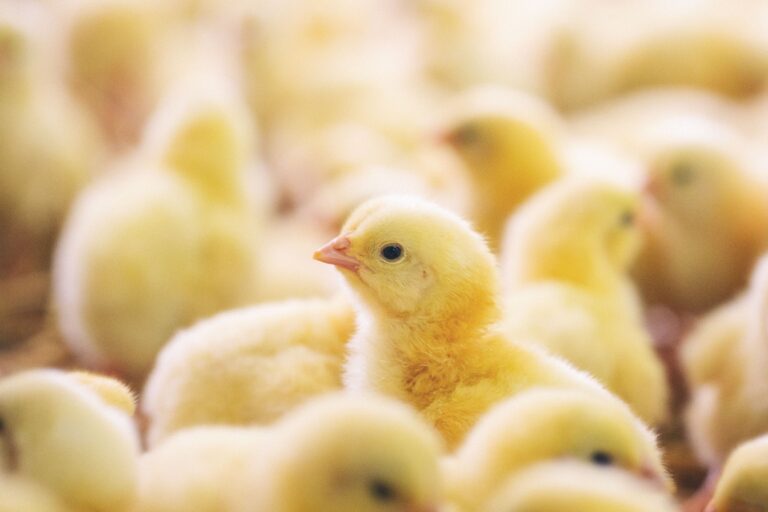Getting cleaning right from day one the focus of a recent poultry workshop run by Cargill in collaboration with Slate Hall Veterinary Services and Aviagen.
Slate Hall vet Damian Holden questioned whether we can – and should – solely rely on visual assessment of cleanout and disinfection, and he highlighted the benefit of a more robust procedure to safeguard performance of flocks.
“Cleaning and disinfecting of our poultry sheds aim to reduce the microbial load,” he said, “but how clean is clean?”
He commented that water and detergent will leave a ‘visibly’ clean shed and, depending on the type of disinfectant used, will heavily reduce microbial load.
“Visual assessment can be a good ‘first’ screen, and it is a good way of identifying areas still containing organic matter. Having a third party to audit the shed and see where improvements can be made is usually beneficial,” added Holden. “And it can be supported by other assessment techniques.”
One of these is a total viable count (TVC), which takes swabs from certain areas of the shed for analysis. The TVC gives a bacterial colony count, or score, usually within two or three days.
“A zero score would suggest no bacterial colonies are present, but the accuracy of a TVC depends on how well the swab was taken and where it was taken from. The type of surface – whether it’s concrete or wood – can affect how well the swab can be taken from nooks and crannies, and this will affect the results.”
A more rapid test for the presence of bacteria, thanks to the handheld device that is used, detects the molecule adenosine triphosphate (ATP) found in cells. “This is an indirect way of measuring how many living cells are on a surface, but again this is reliant on how representative the swabs are,” said Holden.
He pointed out, though, that neither of these techniques measure virus populations. “This is a limitation because some very prevalent viruses in poultry flocks can be resistant to clean-out methods and disinfection, and cause problems in subsequent flocks.”
A more thorough technique, and one that Slate Hall offer to its clients, is the VIR check that has been developed by Royal GD lab, based in the Netherlands. This is a quantitative PCR test that detects five key viruses known to be contagious and particularly prevalent in broiler farms. These viruses are:
Chicken astrovirus, which can cause enteritis and poor growth in young birds,
Reovirus, which can suppress the immune system and cause malabsorption syndrome and arthritis, Avian nephritis, which is linked to kidney damage and poor growth in young birds Rotavirus A and D, which are linked to enteritis and poor growth.
The PCR test is carried out by taking cloacal swabs from a random group of 10 birds at six or seven days old, which are then sent to the lab. “At this age the birds are old enough to pick up the viruses and start shedding them, so the test provides an authentic reading,” said Holden.
“The test gives a measure of these five viruses found in the sample and provides a VIR score which indicates how the viral load will impact growth.”
Results from a Dutch field trial show the effect of the VIR score on growth rates, and a colour coded relative score reflecting the viral load in quartiles, with green being the lowest 25% on the database of flocks, and red being the highest 25%.
In flock one, where chicken astrovirus and avian nephritis virus-3 was detected, but the other three viruses – reovirus, rotavirus A and rotavirus D – were not. The VIR-check score was 26, and the relative score was green. In flock two, all except Rotavirus D were detected – and the VIR-check score was 98 with a relative red score.
“This indicated that house cleaning and disinfection was thorough and successful in flock one, but facilities housing flock two needed further attention. It was no coincidence that daily growth rates in flock two were 2.4g per bird less than the first flock. We’ve seen that, in most cases, broiler flocks with a green relative score will show the highest daily growth rate.”
Slate Hall Veterinary practices have been using the VIR technique with clients. “Some units use it on a regular basis, some once or twice a year, while others may carry out a VIR test if they have a problem,” said Holden.
The practice has monitored trends in VIR results and seen higher scores in colder, wetter months, and lower results in summer, when the typically drier conditions have a positive impact on reducing the viral load.
“Our data showed that January, February and April 2023 were the most problematic months, when sheds took longer to dry out. June 2023 was the only month where the average score from all flocks that we tested was green.”
The identification of viruses through the VIR test will also help producers to fine tune their disinfection programme to target particular problems.
However, a VIR test alone may not be a silver bullet. “It is, in theory, possible for bacterial levels to be low and viral levels high, and vice versa,” added Dr Holden. “And it is more expensive than some other cleanout and disinfecting assessments.”
He emphasised the benefit of starting with visual assessment and being very diligent on checking for organic matter. “There’s no point in focusing on microbial levels if organic matter is still present, or if the samples that are tested for bacteria are not truly representative. So a rethink here may be a good idea.
“And we’ve found that integrating a VIR check into the unit’s assessment plan is beneficial, particularly if there are concerns about bird health and performance.”
Other presentations at Cargill’s workshops looked at the environmental factors on flock health and the influence of gut development from day zero on lifetime performance.


